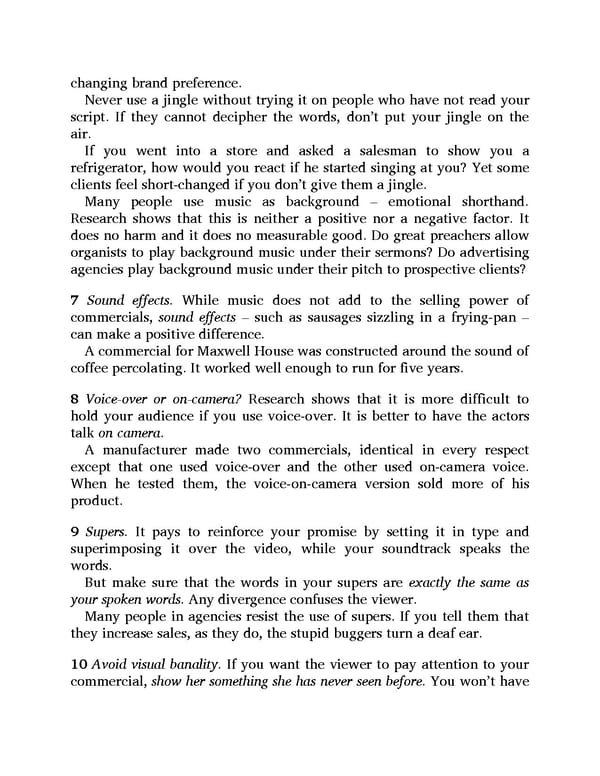changing brand preference. Never use a jingle without trying it on people who have not read your script. If they cannot decipher the words, don’t put your jingle on the air. If you went into a store and asked a salesman to show you a refrigerator, how would you react if he started singing at you? Yet some clients feel short-changed if you don’t give them a jingle. Many people use music as background – emotional shorthand. Research shows that this is neither a positive nor a negative factor. It does no harm and it does no measurable good. Do great preachers allow organists to play background music under their sermons? Do advertising agencies play background music under their pitch to prospective clients? 7 Sound effects. While music does not add to the selling power of commercials, sound effects – such as sausages sizzling in a frying-pan – can make a positive difference. A commercial for Maxwell House was constructed around the sound of coffee percolating. It worked well enough to run for five years. 8 Voice-over or on-camera? Research shows that it is more difficult to hold your audience if you use voice-over. It is better to have the actors talk on camera. A manufacturer made two commercials, identical in every respect except that one used voice-over and the other used on-camera voice. When he tested them, the voice-on-camera version sold more of his product. 9 Supers. It pays to reinforce your promise by setting it in type and superimposing it over the video, while your soundtrack speaks the words. But make sure that the words in your supers are exactly the same as your spoken words. Any divergence confuses the viewer. Many people in agencies resist the use of supers. If you tell them that they increase sales, as they do, the stupid buggers turn a deaf ear. 10 Avoid visual banality. If you want the viewer to pay attention to your commercial, show her something she has never seen before. You won’t have
 Ogilvy on Advertising Page 163 Page 165
Ogilvy on Advertising Page 163 Page 165